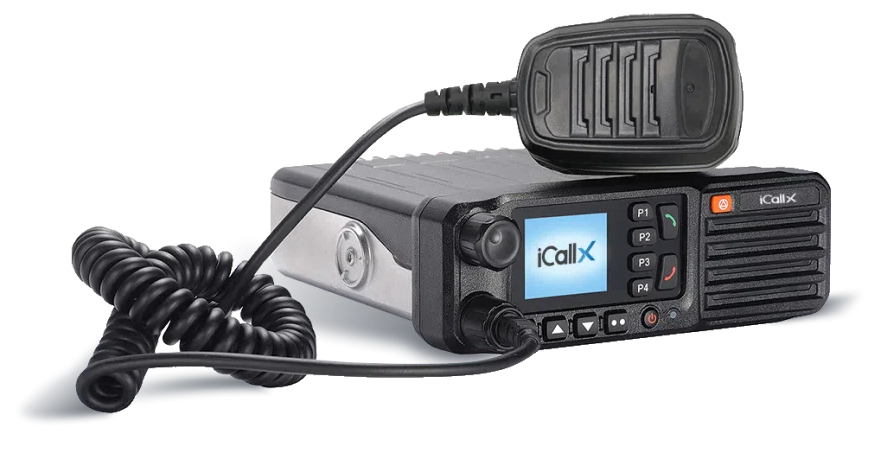LTE vs. PTToC: Understanding the Key Differences
Learn about their speed, coverage, cost, ease of use, and suitability for different business needs to make an informed decision in the LTE vs. PTToC debate.
In today’s fast-paced business landscape, efficient communication is integral to success. Whether it’s coordinating with remote teams, managing logistics, or providing customer support, having the right communication technology can make or break your operations. Two technologies often considered for business communication are LTE (Long-Term Evolution) and PTToC (Push-to-Talk over Cellular). Understanding the nuances of LTE vs. PTToC can help you make an informed decision that aligns with your specific needs.
What is LTE?
LTE, or Long-Term Evolution, is a high-speed wireless communication standard designed for cell phones and data devices. It utilizes advanced network technologies to provide significantly faster data transmission speeds compared to older mobile technologies such as 3G.
It operates on a broadband data connection, supporting a wide array of internet and communication services. From video conferencing to large data transfers, LTE facilitates seamless connectivity, making it a robust choice for businesses that require extensive data usage.
It operates on a broadband data connection, supporting a wide array of internet and communication services. From video conferencing to large data transfers, LTE facilitates seamless connectivity, making it a robust choice for businesses that require extensive data usage.
What is PTToC?
On the other hand, PTToC, or Push-to-Talk over Cellular, is a technology enabling instant voice communication via a push-to-talk button. Similar to traditional walkie-talkies, PTToC allows users to communicate instantly, but it leverages cellular networks instead of radio waves.
This means PTToC offers global communication capabilities, unhindered by geographical distance, thanks to the cellular network infrastructure. PTToC is particularly beneficial for professions that require quick, real-time communication, such as logistics, security, and field services.
This means PTToC offers global communication capabilities, unhindered by geographical distance, thanks to the cellular network infrastructure. PTToC is particularly beneficial for professions that require quick, real-time communication, such as logistics, security, and field services.
TM 840 GW PTToC Radio

Evaluating technologies
LTE vs. PTToC: Speed
When comparing LTE vs. PTToC in terms of speed, LTE takes the lead. LTE’s primary focus is on providing high-speed data transmission, offering download speeds that can exceed 100 Mbps in optimal conditions. This makes LTE suitable for data-intensive applications, such as streaming video, downloading large files, and running cloud-based applications.
PTToC, while efficient for voice communication, does not prioritize data speed. The primary function of PTToC is to facilitate immediate voice interactions, and while it uses the cellular data network, it doesn’t require the high data throughput that LTE offers.
Therefore, if your business needs revolve around high-speed data, LTE is the clear winner.
PTToC, while efficient for voice communication, does not prioritize data speed. The primary function of PTToC is to facilitate immediate voice interactions, and while it uses the cellular data network, it doesn’t require the high data throughput that LTE offers.
Therefore, if your business needs revolve around high-speed data, LTE is the clear winner.
LTE vs. PTToC: Coverage
Coverage is another critical factor in the LTE vs. PTToC debate. LTE benefits from the extensive infrastructure developed by global telecom operators. This broad coverage ensures that LTE services are available in most urban and suburban areas, as well as many rural locales.
PTToC, leveraging the same cellular networks as LTE, similarly offers extensive coverage. However, its efficacy can vary depending on the quality of the cellular network in a given location. The global reach of PTToC makes it advantageous for businesses needing reliable voice communication across vast distances, even internationally.
PTToC, leveraging the same cellular networks as LTE, similarly offers extensive coverage. However, its efficacy can vary depending on the quality of the cellular network in a given location. The global reach of PTToC makes it advantageous for businesses needing reliable voice communication across vast distances, even internationally.
LTE vs. PTToC: Cost
In the LTE vs. PTToC comparison, LTE services generally incur higher costs due to the extensive data usage and infrastructure requirements. Monthly plans for LTE can be more expensive, especially when high data caps are required.
PTToC, focusing primarily on voice communication, may offer more cost-effective solutions for businesses that do not require extensive data usage. PTToC services can be more affordable, as they typically involve lower data consumption.
This can make PTToC a cost-effective choice for industries like transportation and field services, where instant voice communication is paramount.
PTToC, focusing primarily on voice communication, may offer more cost-effective solutions for businesses that do not require extensive data usage. PTToC services can be more affordable, as they typically involve lower data consumption.
This can make PTToC a cost-effective choice for industries like transportation and field services, where instant voice communication is paramount.
LTE vs. PTToC: Ease of Use
LTE devices, including smartphones and tablets, are user-friendly and widely familiar to most users. The intuitive interfaces and versatility of LTE-enabled devices make them a convenient choice for various business applications.
PTToC devices, while also straightforward, are designed for quick and efficient voice communication. The push-to-talk functionality mimics traditional two-way radios, making them easy to use for instant communication. This simplicity can be particularly beneficial in high-pressure environments where immediate response is crucial.
PTToC devices, while also straightforward, are designed for quick and efficient voice communication. The push-to-talk functionality mimics traditional two-way radios, making them easy to use for instant communication. This simplicity can be particularly beneficial in high-pressure environments where immediate response is crucial.
Benefits and Limitations
LTE
Benefits:
- High-speed data transmission
- Wide coverage
- Supports diverse applications (video calls, data transfer, etc.)
Limitations:
- Higher costs
- Reliance on data network quality
PTToC
Benefits:
- Instant voice communication
- Cost-effective
- Global reach
Limitations:
- Limited data capabilities
- Dependent on network reliability
Conclusion
In the LTE vs. PTToC debate, the right choice depends on your business’s specific communication needs.
For enterprises requiring high-speed data for various applications, LTE is a powerful tool that ensures seamless connectivity and productivity. Conversely, for industries prioritizing immediate voice communication over extensive data usage, PTToC offers a reliable and cost-effective solution.
Choosing the right communication technology can significantly impact your business’s efficiency and overall success. By understanding the key differences between LTE vs. PTToC, you can make an informed decision that enhances your operations and keeps you competitive in today’s fast-paced business environment.
For enterprises requiring high-speed data for various applications, LTE is a powerful tool that ensures seamless connectivity and productivity. Conversely, for industries prioritizing immediate voice communication over extensive data usage, PTToC offers a reliable and cost-effective solution.
Choosing the right communication technology can significantly impact your business’s efficiency and overall success. By understanding the key differences between LTE vs. PTToC, you can make an informed decision that enhances your operations and keeps you competitive in today’s fast-paced business environment.
We advise you on what your company needs

